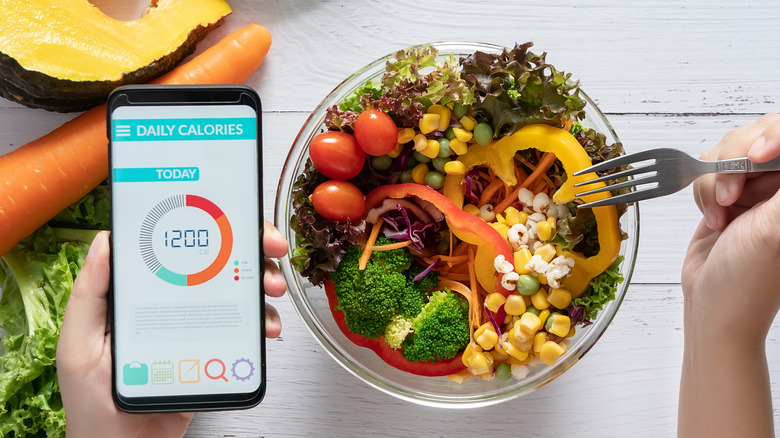Here's How Much Weight You Can Safely Lose In A Month
Who needs visions of sugar plums dancing in your head when you can revel in something much more relational? Take your pick: visions of a slimmed-down version of yourself lounging near a hotel pool during a "girls' weekend," dancing in a tight dress at your best friend's wedding, or kicking up white sand on a Caribbean beach.
Visions like these always seem to shave 10 or 15 pounds from your frame, which can be one enticing picture. But, since you have about one month to make this picture a reality, it seems fair for the sugar plums in your head to stop frolicking long enough to ask: just how much weight can you safely lose in a month? The question carries a sense of hopefulness — and maybe a touch of naivety. All your adult life, you've heard health experts and laymen alike parrot the words of the Mayo Clinic: weight loss takes time, effort, and commitment.
But they're usually referring to long-term weight loss. As much as you'd love to lose weight and keep it off, you make no bones about the fact that, like a destination wedding, you have a destination weight goal. Time's a-wastin'. So while you may be short on time, you're long on effort and commitment. And just look around: with all the crash diets, liquid diets, and quasi-starvation diets that so fascinate the internet, certainly, there must be a way to safely drop 10 pounds or more in a month's time.
Weight loss math doesn't lie
Your assumption is partially right. If you really try, you can lose 10 pounds or more in one month. People do it all the time. But the odds of you doing so safely and for the long term aren't very good. Consider: some of the country's foremost health experts recommend a weight drop of 1 or 2 pounds a week, for a total of between 4 and 8 pounds a month, tops. These experts include those at the Centers for Disease Control and Prevention, the American Heart Association, the Mayo Clinic, and health publications such as Healthline and Medical News Today.
You may prefer to view the challenge one pound at a time. Healthline notes that 1 pound equals 3,500 calories. So if you decide that you want to lose up to 1 pound a week (or 4 pounds a month), you must cut about 500 calories a day from your daily diet, the Mayo Clinic says.
Remember that this is a general rule of thumb; actual numbers are bound to differ depending on your total weight loss goal, your health, and how active you are. Still, to put it in perspective, the Academy of Nutrition and Dietetics recommends that adult women consume between 1,600 and 2,200 calories per day. Men need more, between 2,000 and 3,200 calories per day. No matter which totals you look at it, 500 calories represent a significant portion of a daily caloric intake.
Slow and steady wins the weight loss race
The problem with dropping too much weight too quickly (meaning 8 pounds or more a month) is that it "sabotages your metabolism," EatingWell says. Not only were you likely to have "engaged in unhealthy behaviors," but you probably compromised your body's ability to effectively lose weight in the future. Namely, if you don't consume enough calories, your body may start burning muscle to compensate. It could go into what's known as "starvation mode," where it "burns both fat and muscle for fuel," Women's Health says.
Knowing what you know about weight loss and how much weight you can safely lose in a month, you can hopefully extend your weight loss schedule. There really are no meaningful shortcuts. As the Mayo Clinic says, "The foundation of successful weight loss remains a healthy, calorie-controlled diet combined with increased physical activity. For successful, long-term weight loss, you must make permanent changes in your lifestyle and health habits."
To start, the clinic suggests asking yourself some introspective questions, such as ... Am I really motivated to lose weight — not just for the sake of my appearance but also for my health? Do I have the ability to make better food choices? How can I become more physically active during the day? Maybe then you can fully embrace visions of those sugar plums. They're actually a good source of calcium, potassium, and vitamin C — and biting into one will cost you only 30 calories.


